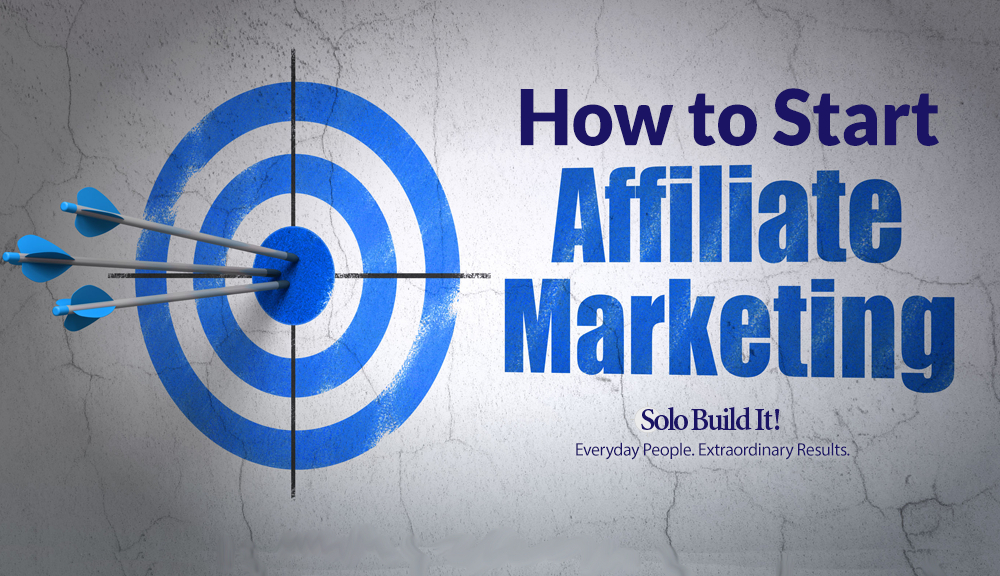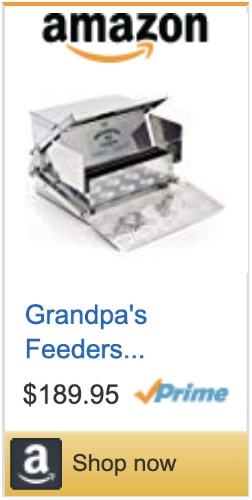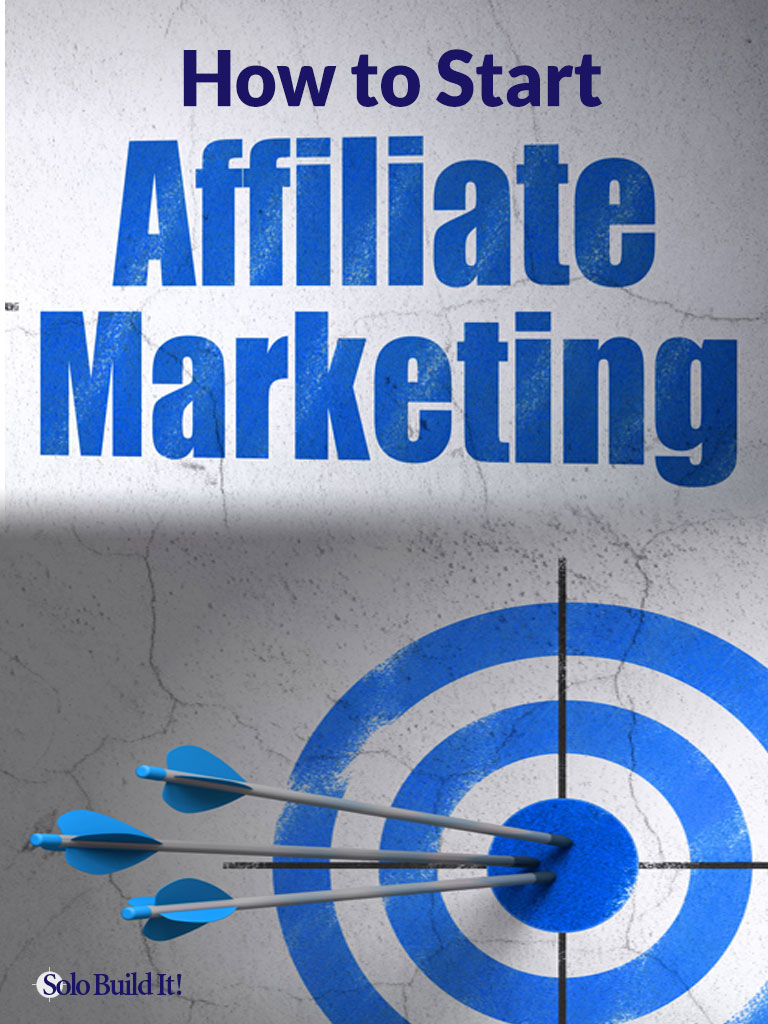
Passive income. It’s what most bloggers aim for: making money while you sleep. And affiliate marketing is a great way to start.
But signing up for every affiliate program available and slapping up dozens of affiliate products on your blog is not the way to success.
The key to making affiliate marketing work is simple: planning. Affiliate income may be passive, but the steps you need to take before earning that first check are not passive.
When you complete these ten steps thoroughly, you’ll give yourself the best chance of earning a substantial income with your affiliate marketing business.
Step 1: Avoid Scams
This one is easy. Avoid promises like this:
“How to Make $10,000 Dollars With Affiliate Marketing for Beginners.”
 Remember the old adage: if it sounds too good to be true, it probably is. Nowhere is that more true than in the world of affiliate marketing, where phoney products and fake reviews abound.
Remember the old adage: if it sounds too good to be true, it probably is. Nowhere is that more true than in the world of affiliate marketing, where phoney products and fake reviews abound.
Stick to the tried and trusted programs and products.
Step 2: How to Start an Affiliate Marketing Website
Think about it. Would you buy from someone you met in the street carrying a suitcase full of fidget spinners, knife sets and Gucci knockoffs? Doubtful, unless you enjoy taking risks.
Selling online is no different. Shoppers look to brands or people they trust. People with a good understanding of a topic, who offer good quality products that will make their customers’ lives easier, safer, or more enjoyable.
If you already have a blog, you’re likely to be at least part way there. You’ve chosen a topic. You’ve narrowed it down so that you’re targeting a specific audience. You know what their problems are. You’ve provided lots of valuable content that helps your blog visitors. You’ve pleased the search engines, so you have a good amount of traffic coming to your blog. And your audience has come to know you over time.
You’ve set in motion the traffic-generating process. Now all you need to do is choose an appropriate affiliate program and convert your loyal readers into customers. No need to panic — we’ll cover “how” in the next steps.
But first: can you start an affiliate marketing business without an information-rich niche blog or website?
You’ll find some articles that say it’s easy to sell from a general blog that does nothing but sell unrelated affiliate products. But think back to our street sales from a suitcase. Why would anyone buy from a site without a specific focus? The audience wants to buy items they have faith will offer them something positive.
- assess what you’re passionate about
- determine whether that subject is in an already saturated market
- determine whether there’s enough demand for it, and
- decide whether there are products in the affiliate marketing sphere that will allow you to make sufficient income.
If you have yet to find your perfect niche, we have a keyword brainstorming tool that will help you discover the perfect combination of your interest, your expertise, and market demand.
Step 3: Choose an Affiliate Program
 There are many affiliate programs for beginners. When you’re thinking about how to get started with affiliate marketing, there’s little doubt that Amazon is the one to choose for promoting physical products.
There are many affiliate programs for beginners. When you’re thinking about how to get started with affiliate marketing, there’s little doubt that Amazon is the one to choose for promoting physical products.
Why?
- It’s one of the world’s most famous brands.
- Shoppers know, like and trust it.
- It has millions of products in every conceivable niche.
- Its return policies are excellent (and all organized between Amazon and the customer so you need have nothing to do with it).
- Its commission rates are not the highest, nor the lowest. Wise product choice can result in a good monthly income.
Once you’ve cut your teeth on Amazon, you can graduate to more complex programs.
Are there any drawbacks to Amazon?
- Its “cookie” only lasts for 24 hours. That means that if the person who clicked on your Amazon affiliate link buys something within 24 hours, you will get a commission. Some program have a time frame of 90 days or more.
- Amazon insists on an active blog or website with at least ten posts, and reviews the content during the assessment process. Click here to learn more about the pros and cons of being an Amazon affiliate.
Step 4: Sign Up for Amazon’s Affiliate (“Associates”) Program and Make Your Blog Compliant
If you have an active blog, there’s no reason why you shouldn’t sign up for Amazon’s program now. Go to this page and click on the “Join Now for Free” button.

It’s a very straightforward process: you’ll be asked for your address, your blog or website URL and some basic profile information. Once done, sit back and wait for Amazon to say “yay” or “nay.”
Making Your Blog Compliant
Before you begin using affiliate links, Amazon requires that you place the following statement on your blog: “As an Amazon Associate I earn from qualifying purchases.” The typical place for this is in your privacy policy and / or affiliate disclosure.
Step 5: Choose Your Product(s)
Here’s the exciting part: you get to spend time looking through Amazon’s millions of products and deciding which you want to promote. It can feel like you’re a kid in a candy store!
But it’s not quite that simple.
The critical thing to remember is to promote a product that’s based on your customer’s needs or desires — not on what you want!
Here are the basics of how to choose your product:
- Identify the problem with which your potential customer is struggling to find a solution.
- Consider what information you can give that will help her solve that problem.
- Think about a product you’ve used that helped you deal with this problem.
- List the pros, the cons and the benefits of every feature of this product. This will form the basis of your written content.
As you’re just starting to build up your affiliate marketing website, concentrate on one main product initially.
Step 6: How to Get Affiliate Links
Here’s how affiliate links work:
- You choose the product and get the link from Amazon (or whichever affiliate program you’re using).
- You place the link, which includes your unique affiliate number, in a content-rich article on your blog.
- Your customer clicks the link, is taken through to the affiliate program, and purchases the product.
- Amazon (or whichever affiliate program you use) recognizes and stores your unique number.
- You’re paid whatever percentage commission the product attracts.
To get Amazon links…

Go to the product page you’re planning to promote and look for the “Site Stripe” bar at the top of the page. Here you’re given options for different types of links.
Text links are used, as the name suggests, within a paragraph of text. You’ll be used to seeing these, normally blue, links in most articles you read.
Below is an example, linking to two products: a rat trap and an automatic chicken feeder. Coincidentally, these are my two biggest affiliate income providers.

Image links, as the name suggests, provide just the image of the product, with a choice of size.

Text+Image is the “old style” Amazon image that everyone recognizes…

The relatively new “Custom” (“Native Shopping Ads”) is a “stripe” effect, which stretches across the page.

Is one more effective than the others? You’ll need to test this out on your own site. Every niche is different.
Make Your Links Legal
- To satisfy Google’s requirements, any link that stands to make money must be “nofollow.” How you add that to each link depends on the platform you use. Solo Build It! members click a button to make the link “nofollow.”
- To satisfy the US Federal Trade Commission guidelines, you must have a clear statement using plain language near your affiliate link stating that you stand to earn money should the visitor click through.
- It’s good practice to open the affiliate link in a new window so that your blog remains open for the reader to return to.
So you’ve chosen and applied to your first affiliate program, you’ve selected your product, and you’ve discovered how to create links.
You’re finished, right?
Wrong! You’re only just beginning!
Because now, you need to write compelling content that will give your reader no choice but to buy the product you’re promoting.
Step 7: Write Compelling Content
Promoting products is a skill in itself. There are different ways of doing it, but the most likely to be successful is writing a detailed product review.
Here’s how to tackle this all-important review:
- Acknowledge the problem the reader is having.
- Find the words the reader uses to talk about that problem, and use the same words.
- Write about the product, if possible from the perspective of personal experience.
- Talk about the features of the product by mentioning their benefits to the reader.
- Acknowledge the negatives.
- Wherever possible, add images that clearly show that you (or in my case, my chickens!) have personal experience of this product.

For more detail about this critical step, take a look at this article about how to write a product review. It goes into detail about each part of this writing process.
But we’re not done yet.
Step 8: Promoting Your Products
Even if you have good traffic to your blog, it’s rarely enough to add an article and leave it to make its own way in the world.
You need to consider ways of promoting it. Here are a few suggestions.
- Make your own “banner” for your product and add it to your most visited pages.
- Use a Pinterest-sized image in a site-wide column to ensure the visitor knows there’s an article. This allows her to pin the image for later if she doesn’t have time to read the article immediately.
- Email marketing. This sounds grand, but it simply means including a link to your review page in your newsletter. Even a small list can make a difference in affiliate sales.
Don’t have an email list? Start one today! It’s never too early, even if your blog is in its very early stages. Resist the temptation to send out promotional content until your reputation as a provider of value is well established, though.
It’s unwise to promote products, or do any form of selling, in every email. One in four is a recommended ratio. Learn about the email marketing best practices to make sure you don’t get more unsubscribes than you want — or worse, ending up in the spam or junk folder!
- If you use social media for business, it can be an excellent platform to promote your product articles.
And don’t forget to promote your website or blog itself!
Step 9: Test, Test, Test!
This is a step that many internet marketers forget. Publishing and promoting a product review article without studying the outcomes can leave money on the table.
Once you have a minimum of three affiliate products, compare their success rates. What’s working? What’s not?
Look in particular at:
- products. Are you targeting the right product to answer your customers’ needs?
- the types of link (in text, image, text+image, stripe). Is one converting readers to customers more frequently than the others?
- the amount of commission. Never choose products solely because of the percentage commission you’ll earn. But if there’s similar product that pays a higher commission, at least consider it.
Step 10: Have Patience!
You won’t earn an income overnight from your affiliate marketing efforts. And although its rightly called “passive income,” you’ll need to invest a good amount of time and work first.
You’ll need to:
- Join the right affiliate programs. Make sure to download our free checklist!
- Choose the best products for your audience. Always ask yourself: What problem does the product solve? How will it make my readers’ lives easier?
- Write a product review that converts without “hard selling.”
Is it worth it?
Online shopping is a fast-growing business. Online statistics predict that by 2020, online shopper numbers will hit four trillion, with 47% of shoppers in the U.S. buying their first item on Amazon.
Now that you know how to start affiliate marketing the right way, you can grab your piece of the online shopping pie.

Cath Andrews
Latest posts by Cath Andrews (see all)
- Start a Passion-Based Business and Live Your Dream - February 1, 2023
- What Do You Say When Their Eyes Glaze Over? - December 20, 2021
- How to Monetize Your Email List in 5 Simple Steps - October 26, 2021

